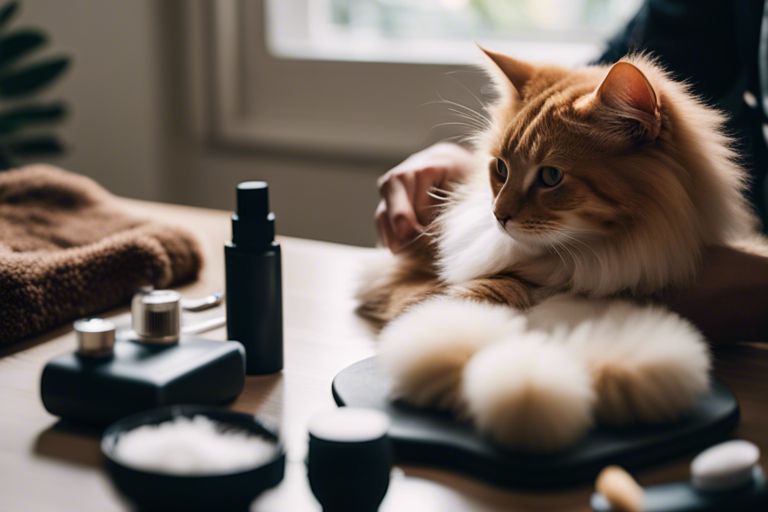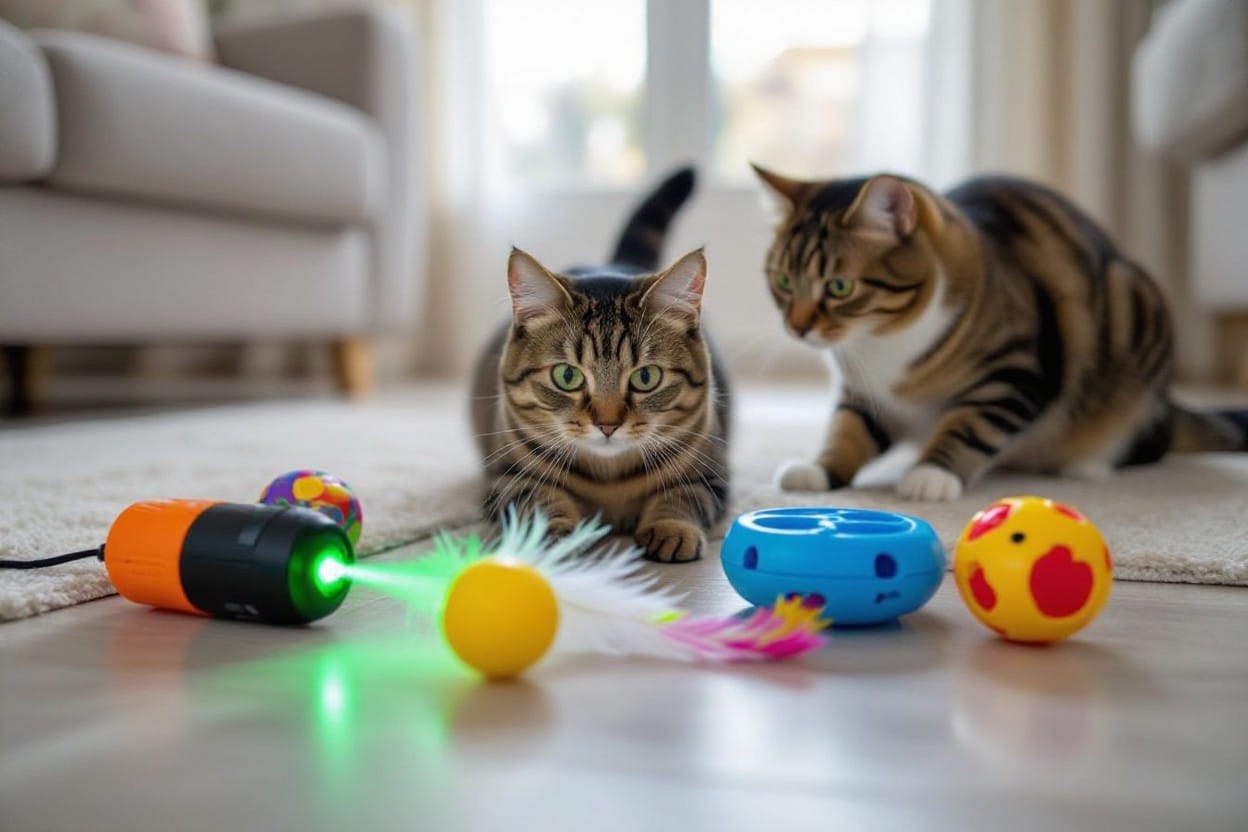Overwhelmed by the thought of grooming your cat at home? Fear not, as we have compiled the ultimate guide to help you navigate this crucial aspect of cat care with confidence. Grooming your feline friend is not only a great way to bond with them, but it also plays a crucial role in their overall health and well-being.
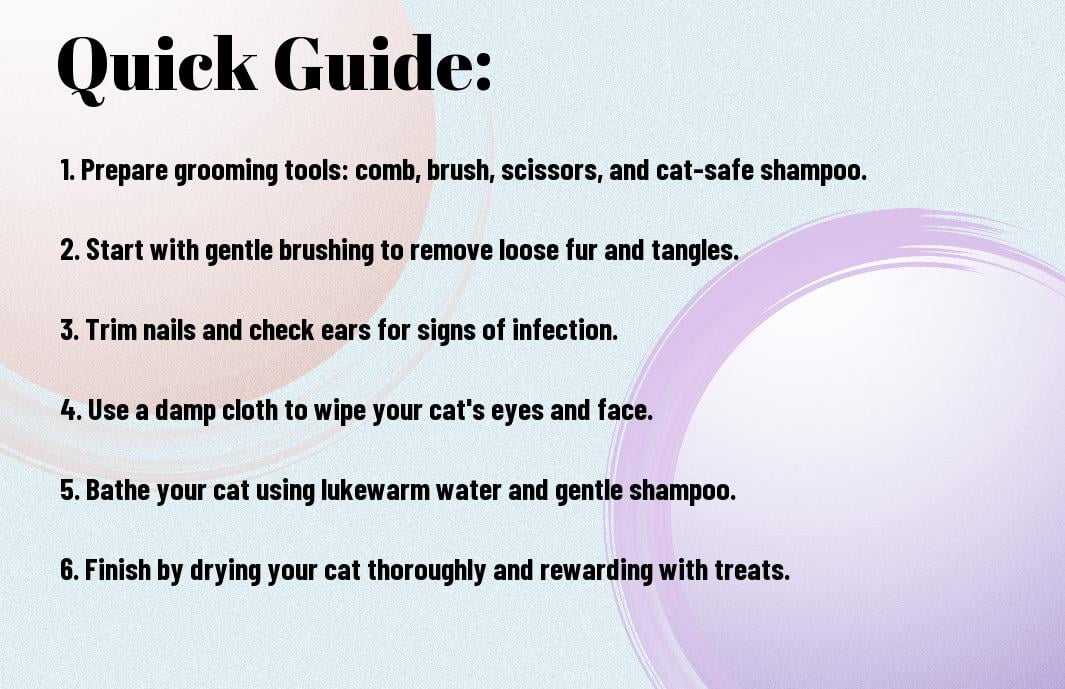
Types of Cat Coats and Personalities
While grooming your cat at home, it’s important to understand the different types of coats they may have and how their personalities can affect the grooming process. Each cat is unique, and their coat type can greatly influence the grooming techniques that are most appropriate for them.
Coat Types and Grooming Techniques
With short-haired cats, grooming is relatively easy and a quick brush once a week should suffice. However, long-haired cats require daily grooming to prevent matting and tangles. The grooming techniques may vary depending on the type of coat your cat has.
| Coat Type | Grooming Technique |
|---|---|
| Short Hair | Weekly brushing |
| Long Hair | Daily grooming to prevent matting |
| Curly Coat | Regular bathing and grooming |
| Thick Coat | Use a de-shedding tool to reduce shedding |
| Double Coat | Regular brushing to prevent matting and reduce shedding |
Assume that knowing your cat’s specific coat type is crucial in determining the appropriate grooming routine for them. The right grooming techniques can help maintain a healthy coat and prevent skin issues.
Grooming Different Cat Personalities
Coats may vary, but cats’ personalities can also influence how they respond to grooming. Some cats may enjoy the grooming process and see it as bonding time, while others may become anxious or agitated. Understanding your cat’s personality can help make the grooming experience more pleasant for both of you.
Different cats have different comfort levels with grooming. Some may be more sensitive to touch and may require a gentle approach, while others may be more tolerant of grooming sessions. It’s necessary to gauge your cat’s reactions and adjust your grooming techniques accordingly to ensure they are comfortable and relaxed during the process.
Essential Grooming Tools and Products
Brushes, Combs, and De-shedders
Some of the imperative tools for grooming your cat at home include brushes, combs, and de-shedders. These tools are crucial for maintaining your cat’s coat and preventing matting. Brushes come in various types such as slicker brushes, bristle brushes, and rubber brushes. Slicker brushes are great for removing loose fur and detangling knots, while bristle brushes help distribute natural oils and remove debris. Rubber brushes are gentle and perfect for cats who are sensitive to grooming.
Shampoos, Wipes, and Other Cleaning Supplies
Cleaning supplies like shampoos and wipes are necessary for keeping your cat clean and fresh. When choosing shampoos for your cat, opt for mild and fragrance-free options specifically formulated for felines. Cat wipes are handy for quick clean-ups in between baths, especially for spot cleaning and freshening up your cat’s coat. Additionally, ear cleaners and toothbrushes are other imperative cleaning supplies to include in your grooming kit to maintain your cat’s overall hygiene.
A healthy grooming routine not only keeps your cat looking its best but also helps prevent skin issues and matting. Regular grooming sessions with the right tools and products can make the experience enjoyable for both you and your feline friend.
Pre-Grooming Tips
Your cat’s comfort and cooperation during grooming sessions depend on the environment and your understanding of their tolerance levels. Creating a calm space and being aware of your cat’s preferences are crucial for a successful grooming experience.
Creating a Calm Environment
To ensure a smooth grooming session, pick a quiet, well-lit room where your cat feels relaxed. Remove any potential distractions, such as loud noises or other pets, and have all your grooming tools within reach. Consider playing soft music or using calming pheromone sprays to help soothe your cat’s nerves before starting the grooming process.
Knowing Your Cat’s Tolerance Levels
An imperative aspect of grooming is understanding your cat’s tolerance levels towards handling and different grooming activities. While some cats may enjoy being brushed, others may be more sensitive to certain touches. Pay attention to your cat’s body language and reactions to determine what they are comfortable with during grooming sessions.
The key to successful grooming is to respect your cat’s boundaries and gradually build up their tolerance over time. If your cat shows signs of stress or discomfort, such as hissing or swatting, take a break and resume the grooming process later. Consistency, patience, and positive reinforcement are key in helping your cat become more comfortable with grooming activities.
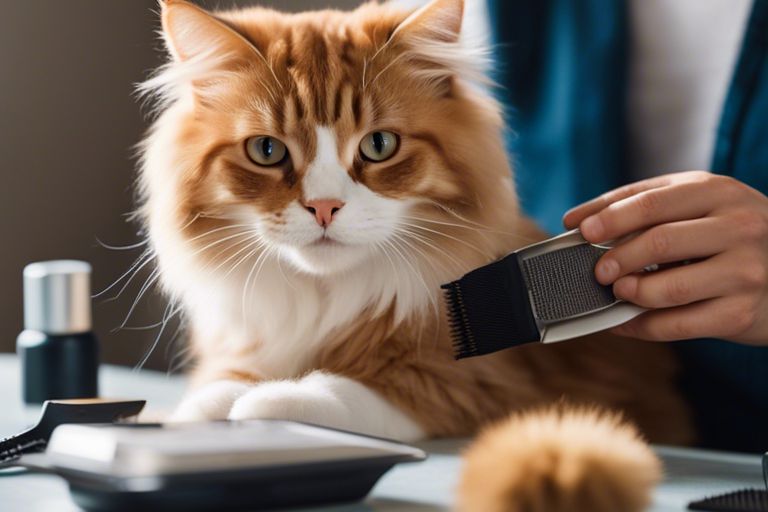
Step-By-Step Grooming Process
After understanding the importance of grooming your cat, it’s time to examine into the step-by-step grooming process to keep your feline friend looking and feeling their best. Below is a comprehensive guide to grooming your cat at home, covering important techniques and tips to make the experience as stress-free as possible for both you and your pet.
| Brushing and De-shedding Techniques | Bathing Your Cat: When and How |
| Assuming your cat is comfortable with being brushed, start by using a comb or brush to gently remove tangles and loose fur. This not only helps prevent mats but also reduces shedding around your home. Regular brushing can also minimize hairballs, especially in long-haired breeds. For cats that dislike grooming, consider using a deshedding tool to efficiently remove loose fur without causing discomfort. | When considering bathing your cat, it’s important to do so only when necessary, such as when your cat has gotten into something sticky or dirty. Most cats are not fond of water, so be prepared with a gentle cat-specific shampoo and a secure bathing area. Start by filling the tub with a few inches of lukewarm water and gently wet your cat’s fur, avoiding the face. Apply the shampoo, lather gently, and rinse thoroughly. |
Process of Bathing Your Cat: When and How
When bathing your cat, always ensure the water temperature is comfortable and avoid getting water in your cat’s ears or eyes. Using a non-slip mat in the tub can provide your cat with a sense of security during the bath. After lathering and rinsing, be sure to dry your cat thoroughly with a towel and reward them with treats for a positive association with bathing.
Trimming Nail Trimming: A Delicate Affair
Trimming your cat’s nails is an important part of their grooming routine to prevent overgrowth and potential injury. Using a specialized nail clipper for cats, carefully trim the sharp tip of each nail, avoiding the quick – the pink part that contains nerves and blood vessels. If you’re unsure, consult your veterinarian or a professional groomer for guidance on proper nail trimming techniques.
Ear and Dental Care Essentials
Assuming your cat allows ear cleaning, use a damp cotton ball or pad to gently wipe the outer ear area. Avoid inserting anything into the ear canal to prevent injury. Dental care is also vital for your cat’s overall health. Introduce tooth brushing with a cat-specific toothpaste and toothbrush to prevent dental issues and maintain fresh breath. Regular veterinary check-ups can also help monitor your cat’s oral health.
Factors Influencing Grooming Routines
Unlike dogs, cats are known for their meticulous self-grooming habits. However, there are certain factors that can influence their grooming routines, including age, health considerations, and seasonal changes. Understanding these factors can help you establish an effective grooming routine for your feline friend.
Age and Health Considerations
You must consider your cat’s age and health status when grooming them at home. Older cats may have difficulty grooming themselves due to arthritis or vision problems, making regular brushing crucial to prevent matting and skin issues. Cats with health conditions like obesity or diabetes may also require extra grooming to maintain their coat’s health.
- Regular grooming can help you monitor your cat’s overall health and detect any abnormalities early on.
- Thou should always consult with your veterinarian if you notice any changes in your cat’s grooming habits or coat condition.
Seasonal Grooming Adjustments
Factors such as shedding patterns and environmental changes can influence your cat’s grooming routine throughout the year. As seasons change, you may need to adjust the frequency and techniques of grooming to address specific needs.
Plus, during shedding seasons, more frequent brushing can help prevent hairballs and reduce shedding around your home. In contrast, during colder months, you may need to focus on maintaining your cat’s coat length and thickness to keep them warm.
The Pros and Cons of Home Grooming
| Pros | Cons |
| Convenient | May be challenging for some cat personalities |
| Bonding experience | Requires time and patience |
| Cost-effective | Potential for injury if not done properly |
| Regular grooming can prevent matting | May not achieve professional results |
The Benefits of Bonding and Cost Savings
An necessary benefit of grooming your cat at home is the opportunity to strengthen your bond with your furry friend. Regular grooming sessions can help build trust and create a positive experience for your cat. Additionally, grooming your cat at home can lead to significant cost savings over time compared to frequent visits to professional groomers.
The Challenges and Potential Risks
On the flip side, grooming your cat at home can present challenges and potential risks. Some cats may not enjoy the grooming process and may become stressed or anxious, making it difficult to complete the grooming session. There is also a risk of accidentally hurting your cat if you are not experienced in handling grooming tools properly or if your cat is uncooperative.
Benefits of home grooming include the opportunity to monitor your cat’s health closely. During grooming sessions, you can check for any lumps, bumps, skin irritations, or signs of parasites that may require veterinary attention.
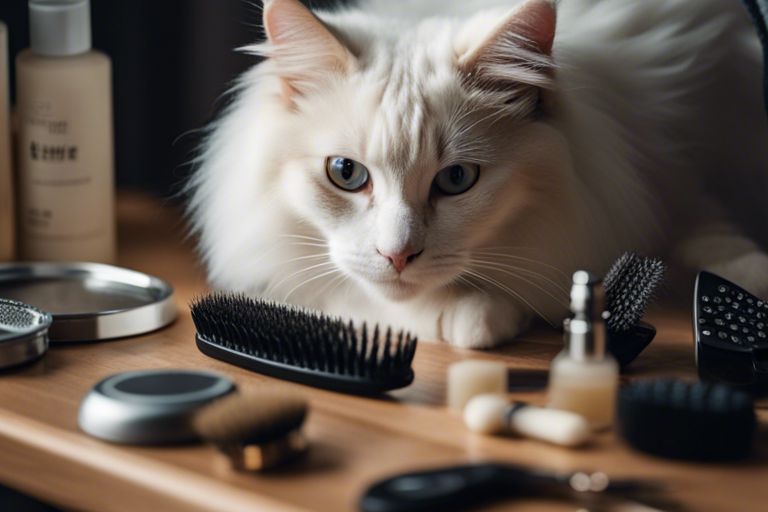
Maintaining a Regular Grooming Schedule
Tracking Your Grooming Activity
To ensure that your cat’s grooming needs are consistently met, it is important to keep track of your grooming activity. Create a grooming schedule and mark down the dates when you brush, trim nails, clean ears, and bathe your cat. This will help you stay organized and make sure you are not missing any imperative grooming tasks. You can use a calendar, planner, or even a grooming journal to record these activities.
Spotting and Addressing Grooming Issues Early
Regular grooming sessions provide you with the opportunity to spot any grooming issues early. By carefully inspecting your cat’s skin, coat, ears, and nails during grooming, you can identify any abnormalities such as lumps, bumps, redness, parasites, or matting. Addressing these issues promptly can prevent them from escalating into more serious health problems and ensure your cat remains healthy and comfortable.
This proactive approach to grooming not only helps maintain your cat’s hygiene and appearance but also promotes their overall well-being. It is imperative to be observant and attentive during grooming sessions to catch any grooming issues early and take the necessary steps to address them effectively.
Final Words
On the whole, grooming your cat at home can be a bonding experience that helps maintain their health and well-being. By following the tips outlined in this ultimate guide, you can ensure that your cat stays clean, comfortable, and free from common grooming issues such as mats and hairballs. Remember to be patient and gentle with your cat during grooming sessions, and don’t hesitate to seek professional help if you encounter any difficulties or concerns. With proper grooming care, your feline friend will not only look their best but also feel their best.
FAQ
Q: Why is grooming important for my cat?
A: Grooming is important for your cat’s overall health and well-being. It helps prevent matting, reduces shedding, promotes healthy skin, and allows you to check for any abnormalities or parasites.
Q: How often should I groom my cat?
A: The frequency of grooming depends on your cat’s breed and coat length. Long-haired cats may need daily brushing, while short-haired cats may require grooming once or twice a week.
Q: What tools do I need for grooming my cat at home?
A: You will need a cat brush or comb suitable for your cat’s coat type, nail clippers, cat-friendly shampoo, ear cleaner, and styptic powder in case you accidentally cut the nails too short.
Q: How can I make grooming a positive experience for my cat?
A: Introduce grooming gradually, reward your cat with treats, use gentle strokes, and stop if your cat becomes agitated. Make grooming sessions short and enjoyable to create a positive association.
Q: Are there any specific tips for grooming elderly cats?
A: Older cats may have sensitive skin, arthritis, or reduced mobility, so use soft brushes, be gentle during grooming, and consider consulting a veterinarian for advice on grooming products and techniques suitable for senior cats.
